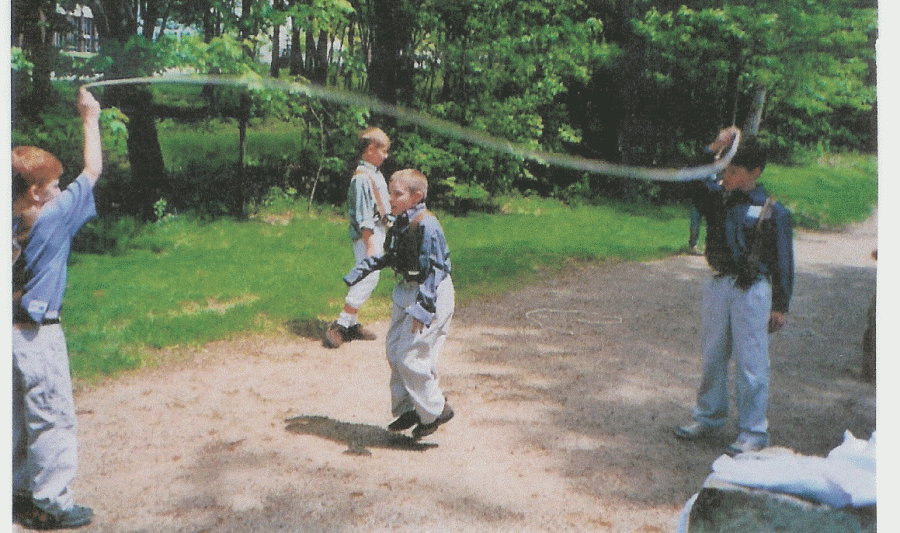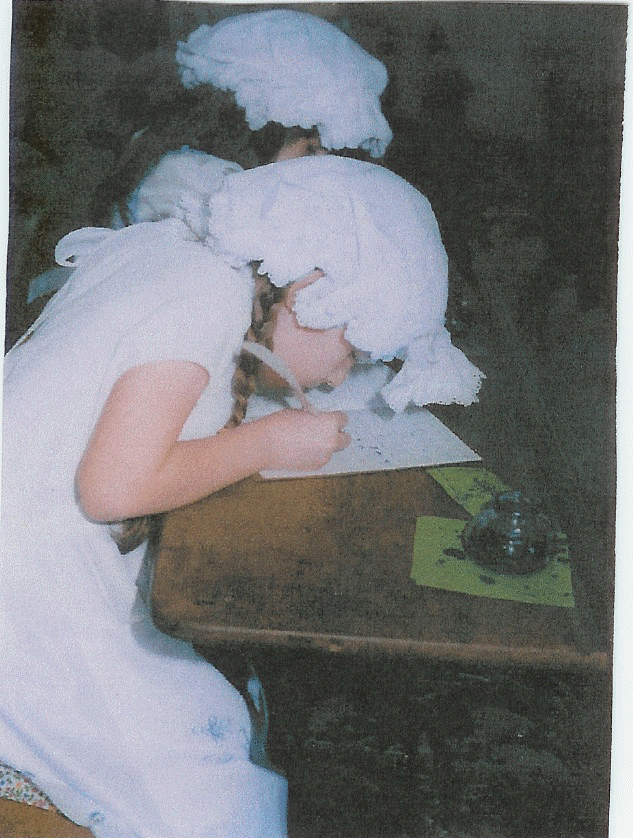
1845 Fisher School |
1800s School Day Program |
| Each May, the Historical Society provides all of Westwood’s third graders with the unique opportunity to step back in time and spend a day doing the things that school children did in 1868. This very special program was originally designed by Joan Swann and Elaine Nye working with the district’s curriculum coordinator. It is now coordinated by Charles Donahue and staffed by many volunteers.
See below for more or go to the video to see some great clips from a past 1800s School Day (https://www.youtube.com/watch?v=YPIgupyGRZ4 ). Courtesy of the Westwood Media Center
The program recreates a typical day in the life of a student in the year 1868. The school day begins at 9:00 at the Fisher School and lasts until 1:30. A hand bell signals the beginning of the school day which includes authentic lessons on oral reading, memorization, recitation, figuring on slates, mental arithmetic, penmanship using ink and quill pens, a spelling bee, and a history lesson that teaches the students about the history and restoration of the schoolhouse and challenges them to think about and compare classrooms past and present. After the children finish their day at the schoolhouse, they go to the old Westwood Cemetery where they visit the graves of Robert Steele, drummer boy at the Battle of Bunker Hill; John Buckmaster, first Westwood resident buried in the cemetery in 1752; members of the Colburn family; and Ebenezer Fisher for whom the schoolhouse was named. The children are required to do some advance preparation. To begin with, they are expected to dress in clothing that is appropriate to the period. Girls are expected to wear dresses or skirts (long preferably), cotton blouses, bonnets, shawls and pinafore aprons. Boys are expected to wear cotton pants, cotton or flannel shirts; no printed T-shirts, sweatshirts, sweatpants or baseball caps. Students bring their lunch in a basket, small metal pail, large cloth napkin or bandana. The foods should include only things that were available in the 1800s, thus eliminating things such as fruit rollups, gummy bears, Twinkies and so on. To provide a permanent record of their day, students are asked to bring their own copybook to use for lessons during the day. During recess, the children play games that were popular during the mid-19th century, including jump rope, marbles, bean bag toss, and hoop rolling.
At the end of the day, each scholar receives a personalized certificate that marks the successful completion of the 1800s school day – a unique and memorable experience that would be envied even by Laura Ingalls Wilder! |

|

